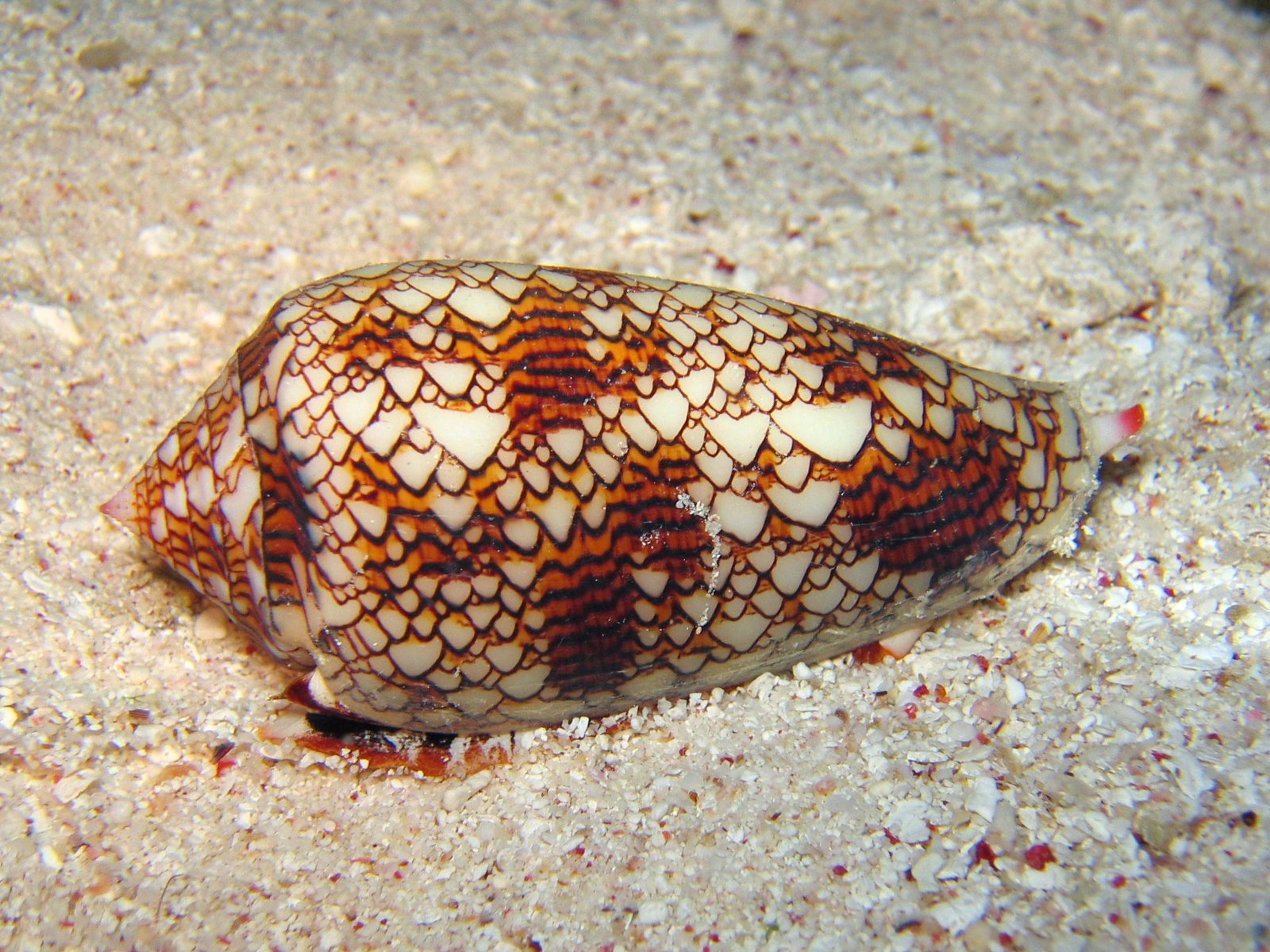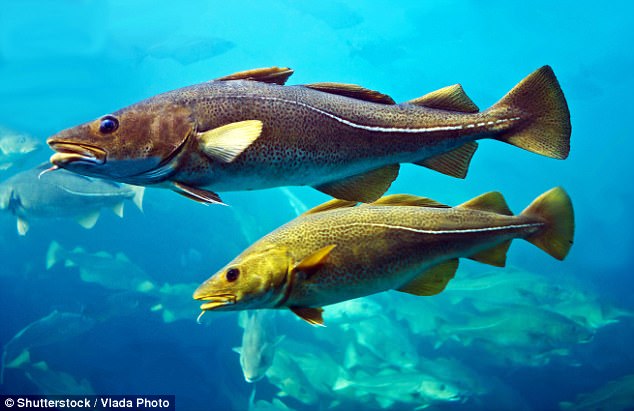Journal source: Temsah G, Johnson K, Evans T, Adams DK (2018) Benefits of biodiverse marine resources to child nutrition in differing developmental contexts in Hispaniola. PLoS ONE 13(5): e0197155.https://doi.org/10.1371/journal. pone.0197155
Linking child health to coral reef biodiversity
Biodiversity – the variety of species and genetic makeup of animals, plants, and microbes within a habitat – is the cornerstone of life on Earth. Biodiversity ensures ecosystems can function and provide us with clean water and a variety of food products. While it may not always be apparent or appreciated, people depend on biodiversity in their daily lives. Human health ultimately depends on ecosystem services such as these are requisite needs for healthy and productive livelihoods. Loss of biodiversity can adversely impact human health if ecosystem services can no longer meet society’s needs.
A biodiversity hotspot
Coastal coral reefs in the tropics are hotspots for biodiversity. They not only serve as protection from storms, but also as habitat to support commercially important fish species. An estimated 3 billion people worldwide depend on coral reef fish as a significant source of animal protein. Fish supply human diets with essential micronutrients, vitamins, and fatty acids; without the bountiful and diverse fish populations thriving in coastal ecosystems, billions of people would be vulnerable to nutrient deficiencies.
Small-scale fisheries produce roughly 80% of the world’s fish catch that provides these nutritional benefits. For most of these fishermen, both the income from sales and direct consumption of their catch contribute to household health and nutrition. Yet, coral reefs are increasingly threatened by ocean acidification, overfishing, and pollution, which places marine biodiversity and the livelihood of local fishermen at risk. If coral reef biodiversity is linked to human health, could degradation of vital marine resources translate into declines in human health?
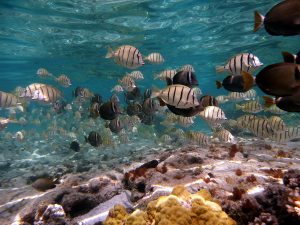
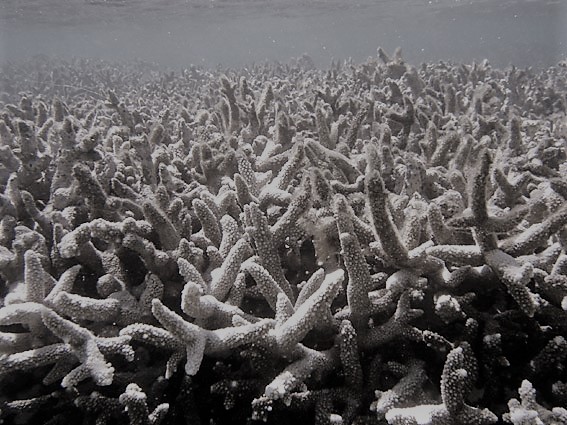
A link between marine and human health?
A nation’s industrial development and infrastructure complicates the relationship between marine biodiversity and human health. For instance, in coastal nations with poorly developed transportation systems, people living far away from coastlines may be at increased risk of deteriorating health simply because they cannot access the fisheries.
As nations develop infrastructure and markets that potentially contribute to coral reef degradation, coastal reef communities face increased stress from commercial fishing. At the same time, small-scale fishermen, one of society’s most marginalized groups, are at an increased risk of losing access to the marine resources they depend upon for their livelihood.
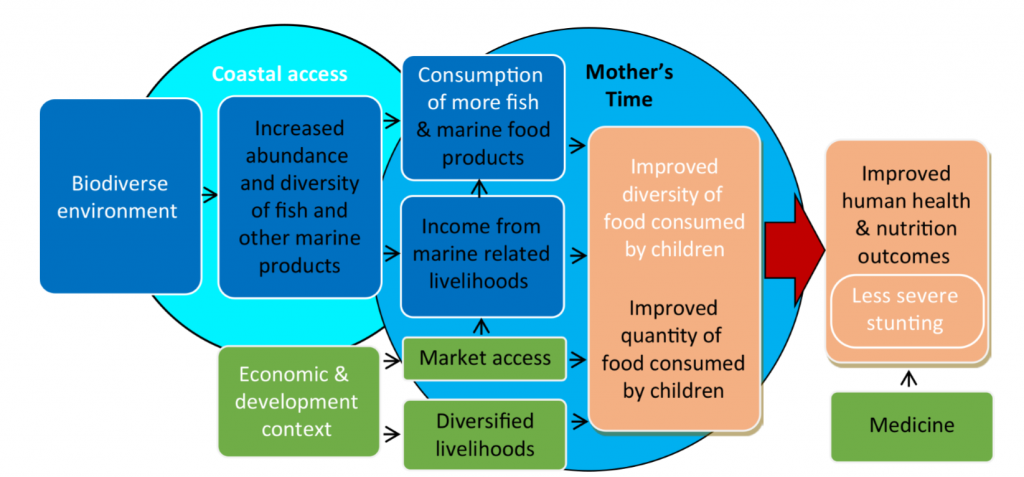
Given the above complexities, the present study explored relationships among biodiverse marine resources, human health, and national contexts on the island of Hispaniola, where coastal communities rely on the surrounding coral reefs with contrasting infrastructure.
Case study: Haiti and Dominican Republic
Hispaniola consists of two countries with sharply contrasting demographic, ecological, and societal contexts: Haiti and the Dominican Republic (DR).
Haiti is the poorest country in the Western Hemisphere and among the poorest in the developing world. In 2007, about 54% of the population in Haiti lived on less than $1 a day. Only 2.5% of the population of the DR in 2006 lived on less than $1 a day. Additionally, nearly one third of children are stunted in Haiti, a stark contrast to 10% stunted in the Dominican Republic. Stunting is an irreversible condition due to malnutrition that affects cognitive ability, health, employment, and earnings in adulthood.
Haiti’s natural terrestrial and marine resources, including its coral reefs, are far more degraded than those of the DR. An estimated 50,000 Haitian fishers and their families rely on coastal resources as their primary source of income and food, but Haitians consume considerably less fish protein than a person living in the DR.
Because of the differences in national development and overall human health between Haiti and the DR, the study authors explored the association between marine resources and child health in each of these countries. They used available child health and nutritional data from Demographic and Health Surveys (DHS) from Haiti and DR households to explore the association between biodiverse marine resources and childhood fish and shellfish consumption, dietary diversity, and incidence of severe stunting. The authors had access to thousands of household surveys in each country, and they used data on children from each household that was surveyed.
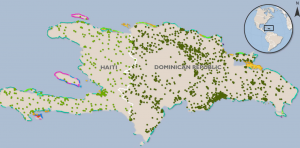
The authors focused on the following factors:
-Childhood dietary diversity, which refers to the number of different macro- and micro-nutrients consumed by a child
-Prevalence of severe stunting
-Distance of children’s surveyed households to coast, as this metric is a direct link to accessibility of households to marine resources
-Diversity of coral reef habitat types, as diverse microhabitats are linked to biodiverse fish and shellfish communities.
The authors used statistical models to estimate the association between coastline proximity and coral reef habitat diversity with the various indicators of child nutritional status.
Results
In Haiti, children living less than 5 km from coastlines were least likely to be severely stunted compared to those living further from the coast. The DR, in contrast, had more child stunting occurring closest to the coast and furthest from the coast, while those children living in the middle were least likely to be stunted. This could be due to effective transportation systems in the DR that allow marine and agricultural food products to be traded over long distances, which allows the “in-between” households to access a wide range of nutritional foods.
Some unexpected relationships emerged between coastal proximity and dietary diversity. Children living farther away from the coastline in Haiti were 40% less likely to have a diverse diet than children living within 5 km of the coast. The opposite was true for the DR, in which children living further away from the coast were twice as likely to have a diverse diet compared to those living nearest the coast.
In both countries, the authors found no clear association between coral reef habitat diversity, dietary diversity, and stunting. In Haiti, children living close to the most diverse coral reef habitat experienced the highest degree of severe stunting. In DR, reef habitat diversity did not seem to have any influence on the degree of stunting in children. This could be due to overfishing which has stripped otherwise diverse coral habitats of their biodiverse fish communities.
The bigger picture
This study showed that coastal proximity and marine biodiversity will have a weaker influence on child health and nutrition outcomes in a more advanced development context. In Haiti, terrestrial resources are severely degraded, agriculture is not profitable, and road systems are underdeveloped; in this setting, living closer to the coasts and marine resources is important for child health outcomes.
Conversely, the DR has terrestrial resources that provide affordable substitutes for fish and more developed roads to facilitate access to markets. Extensive road networks in the DR meant that coastal proximity did not play a major role in child nutrition because children living very far away from coastlines could still reap the health benefits of marine resources.
The take-home message resides in the national infrastructure, which can facilitate or inhibit households to access nutrition from marine resources. Furthermore, this study emphasizes that while countries may have neighboring borders on the same island and share a coral reef ecosystem, their human health outcomes may be as different as night and day. Maybe the key to improved child health in island nations is to protect both marine resources and terrestrial resources so that households, regardless of their distance away from the coast, can have access to a diversity of nutrition.
Kate received her Ph.D. in Aquatic Ecology from the University of Notre Dame and she holds a Masters in Environmental Science & Biology from SUNY Brockport. She currently teaches at a small college in Indiana and is starting out her neophyte research career in aquatic community monitoring. Outside of lab and fieldwork, she enjoys running and kickboxing.


